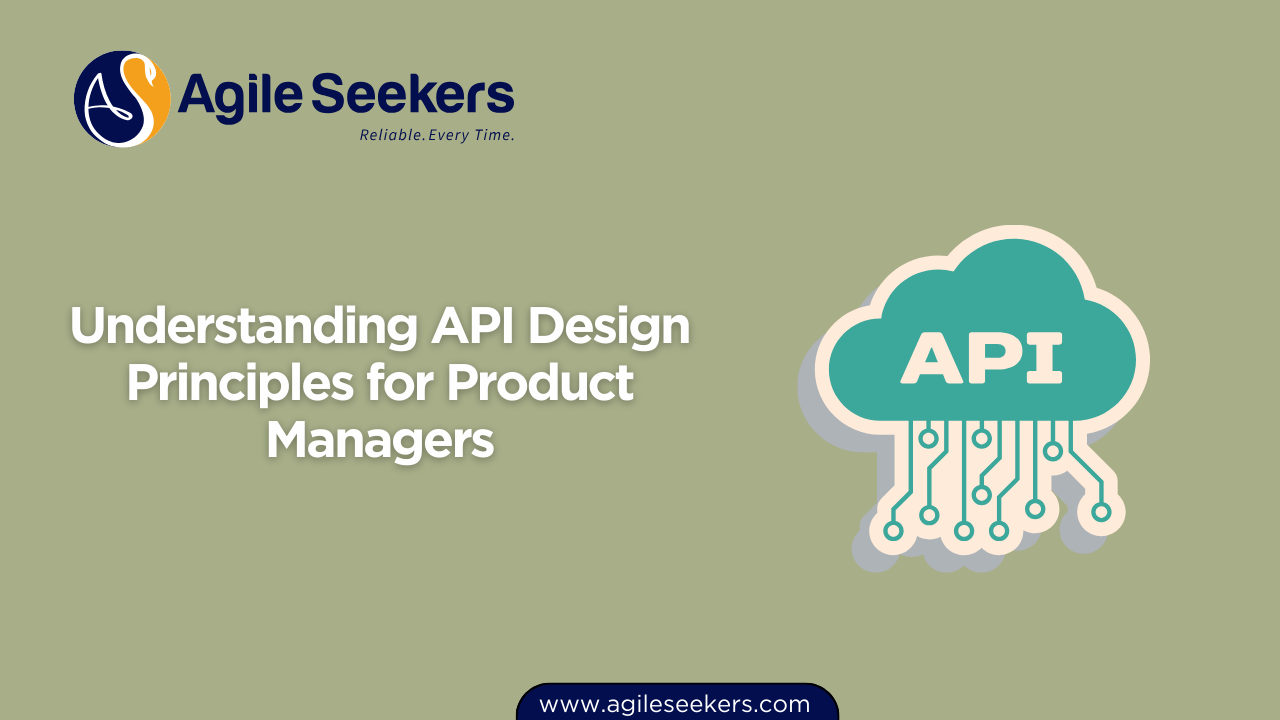Understanding API Design Principles for Product Managers

APIs have become a critical interface layer between systems, services, and products. For product managers, understanding how APIs are designed helps improve collaboration with engineering teams, ensures feasibility in product roadmaps, and enhances the customer experience through scalable integrations.
Although you don’t need to write production-ready code, grasping the fundamentals of API design principles helps you make better product decisions. In this post, we’ll explore key API concepts every product manager should understand—from resource modeling to versioning—and how they relate to real-world decision-making.
Why API Design Matters to Product Managers
APIs are not just technical assets—they're core product features. Whether your team is building a public developer platform, third-party integrations, or internal service communication, poor API design can introduce security risks, increase maintenance costs, and damage user trust.
For product managers, this means understanding:
- How design decisions impact developer experience
- How APIs align with your business model (e.g., monetization via API calls)
- The trade-offs between flexibility and stability
By learning API fundamentals, you bridge the gap between technical implementation and business goals—similar to how the SAFe POPM Certification helps align strategic intent with execution in Agile environments.
REST, GraphQL, and gRPC: Choosing the Right Style
Before diving into design principles, product managers should know the types of API architectures:
- REST: The most common style, based on resource URLs and HTTP methods (GET, POST, etc.). Ideal for predictable, standard interactions.
- GraphQL: Allows clients to query only the data they need. Great for complex applications like dashboards or mobile apps.
- gRPC: Uses binary protocol and is efficient for internal services where speed and payload size matter.
As a product manager, participate in API design conversations early to ensure the chosen architecture aligns with performance needs and product requirements.
1. Resource Modeling and Naming Conventions
At the core of good API design is clear resource modeling. Think of resources as nouns—users, projects, orders—and actions on them as HTTP verbs. Well-named resources improve readability and predictability.
GET /projects
POST /projects
GET /projects/123
PUT /projects/123Avoid verbs in endpoint names. Instead of /createProject, use POST /projects. This RESTful approach makes APIs intuitive and adheres to standard design norms, which in turn reduces onboarding time for developers.
2. Versioning for Stability and Evolution
APIs evolve, and versioning ensures backward compatibility. Popular versioning strategies include:
- URI versioning:
/v1/users - Header versioning: Use request headers like
Accept: application/vnd.api.v2+json
While versioning adds complexity, it also protects downstream consumers from breaking changes. As a product manager, advocate for clear deprecation policies to avoid surprises for your API users.
3. Pagination and Filtering for Large Datasets
For APIs returning large collections—like customer records or transactions—pagination prevents performance bottlenecks. There are different techniques, including:
- Offset-based:
?page=2&limit=50 - Cursor-based:
?after=abc123
Encourage your team to include filters and sort options to give clients flexibility. These enhancements improve API usability and reduce unnecessary network traffic.
4. Authentication and Authorization
Security is non-negotiable. APIs often expose sensitive operations and must be protected. Common methods include:
- API Keys: Simple but suitable only for low-risk use cases
- OAuth 2.0: Industry standard for user delegation (e.g., logging in via Google)
- JWT (JSON Web Tokens): Widely used for stateless authentication
Product managers should define the level of access required for different API users. For instance, internal microservices may not need the same auth strategy as external APIs. This aligns with how PMP Certification training teaches you to manage security across project constraints.
5. Error Handling and Status Codes
Clear, consistent error messages are essential for a good developer experience. APIs should use standard HTTP status codes:
| Status Code | Meaning |
|---|---|
| 200 | Success |
| 201 | Resource Created |
| 400 | Bad Request |
| 401 | Unauthorized |
| 404 | Not Found |
| 500 | Internal Server Error |
In addition to codes, provide meaningful error messages and trace IDs for easier debugging. This reduces developer friction and accelerates integration time.
6. Documentation and Developer Experience
Even a well-designed API is ineffective without documentation. Invest in tools like Swagger UI or Stoplight to generate and publish API specs.
Your documentation should include:
- Authentication steps
- Detailed endpoints with sample requests/responses
- Error codes
- Rate limits and usage policies
Think of API documentation as a product, not just a reference. Better docs lead to faster adoption and fewer support requests.
7. Rate Limiting and Throttling
To protect your backend systems and ensure fair usage, APIs should include rate limiting. For instance:
Rate-Limit: 1000
Rate-Remaining: 100
Rate-Reset: 3600Set limits based on user roles or pricing tiers. This ties back to your product’s monetization model and protects system integrity—especially for public APIs or external partners.
8. API Analytics and Monitoring
Track usage, latency, and error rates to continuously improve your API. Tools like Postman Monitoring, Datadog, or Kong help identify anomalies and optimize performance.
As a product manager, review these metrics to inform roadmap decisions, deprecation timelines, or partnership strategies.
Bringing It All Together
Great APIs are invisible when they work well—but their design has a huge impact on developer trust, product scale, and business agility. As a product manager, learning API design principles makes you a more effective partner to engineering teams and helps deliver better customer outcomes.
If you're managing large cross-functional projects or platforms with integrations, gaining a structured understanding through Project Management Professional certification or SAFe Product Owner/Manager certification can sharpen your systems thinking and stakeholder alignment.
Well-designed APIs reflect thoughtful product management. Get involved early, ask the right questions, and treat the API as a core product asset—not just a technical utility.
Also read - Feature Prioritization Using RICE and ICE Models in Product Roadmaps
Also see - Managing Product Lifecycle with Versioning and Sunset Strategies




















